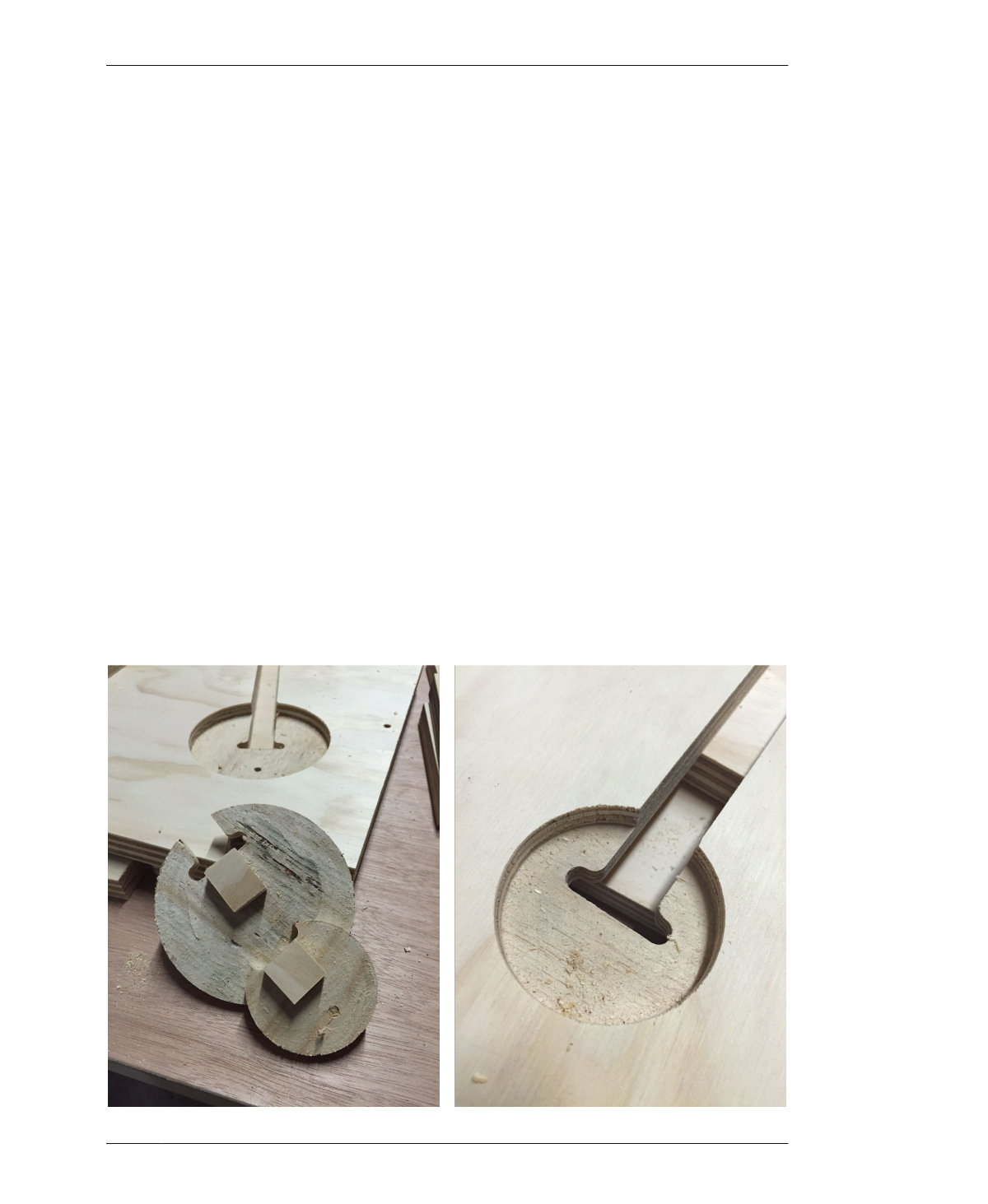
PARTIAL PROTOTPYE
02: Open the test piece file in SketchUp and
scale all of the 2D parts by S.
03: Select Save As, adding the amount of S to
the filename (e.g.,
AtFAB_LNG_TEST_9842.skp).
PREPARE TOOLPATHS
01: Following the steps in “Job Setup” on page
170, import the scaled test piece file into
VCarve Pro and locate it on a clear area of one
of the sheets (Figure 11-5).
02: Assign toolpaths to each of its three profile
toolpathing layers, outside, inside, and holes,
shown in Figure 11-6.
◦ Outside toolpaths (blue vectors) cut around
the outside of all chair parts.
◦ An inside toolpath (green vectors) cuts the
slot in the chair seat.
◦ The holes (red vectors) toolpath for fastener
holes uses a smaller end mill.
03: Set the cutting sequence so that the CNC
cuts fastener holes and inside cuts prior to cut-
ting outside profiles (Figure 10-1), in order to
keep details aligned within the parts. Since fas-
tener holes require an end-mill change, posi-
tion them first in the cut sequence, so you only
need to change a tool once.
ABOUT THE POCKETS
In addition to defining toolpaths for outside
cuts, inside cuts, and holes, the 90-Minute
Lounge test piece uses toolpaths for pocket
cuts, shown as orange vectors in the cut file,
shown in Figure 11-6. Pockets create the two
recessed areas found in each of the Lounge
Chair’s side parts.
Each pocket accepts a matching inlay key that
locks the seat and seat back into each side of
the chair (Figure 11-7). The depth of these
pockets should match the height of the keys.
When skillfully executed, the keys make for an
FIGURE 11-7
Machined Lounge Chair
inlay keys
11/90-MINUTE LOUNGE CHAIR
241
